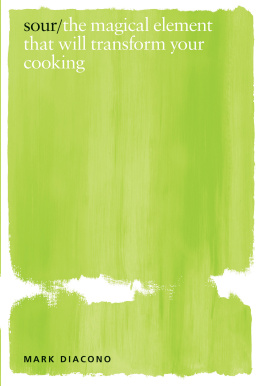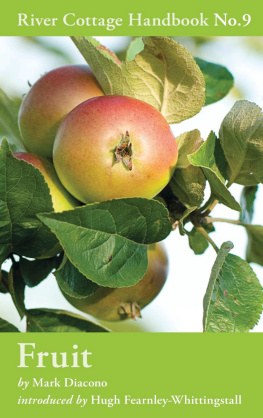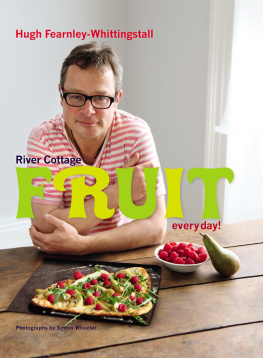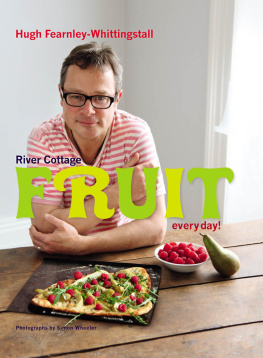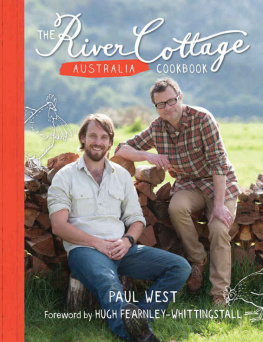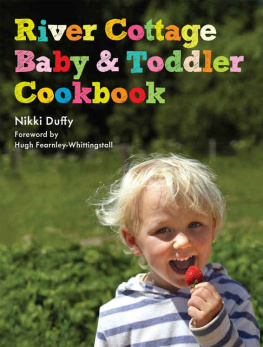
For Chris, Ian and Stuart the oldeddest and best of friends
Publishing Director Sarah Lavelle
Commissioning Editor Susannah Otter
Art Director Claire Rochford
Design Matt Cox at Newman+Eastwood Ltd.
Photographer Mark Diacono
Props Holly Bruce
Ceramics Ella Hookway, Tasja Pulawksa
Production Director Vincent Smith
Production Controller Nikolaus Ginelli
Published in 2019 by Quadrille, an imprint of Hardie Grant Publishing
Quadrille
5254 Southwark Street
London SE1 1UN
www.quadrille.com
All rights reserved. No part of this publication may be reproduced, stored in a retrieval system or transmitted in any form by any means, electronic, mechanical, photocopying, recording or otherwise, without the prior written permission of the publishers and copyright holders. The moral rights of the author have been asserted.
Cataloguing in Publication Data: a catalogue record for this book is available from the British Library.
text Mark Diacono 2019
photography Mark Diacono 2019
design Quadrille 2019
eISBN 9781787133334


CONTENTS

Despite a seventies and eighties childhood largely dedicated to sugar and potatoes in all their glorious forms, it is the sour I remember fondest. Of those quarter-pounds of sweets decanted from sweet-shop jars to be secreted in my blazer pockets for mid-lesson pleasure, most were sharp; acid drops, sherbet lemons, rhubarb and custards and soor plooms among them. Theres a yoghurt I can still almost taste, despite the decades passed.
It may have been made by St Ivel. The stubborn foil peeled back on a layer of chocolate hard and thin as ice on a winter puddle and the colour of cheap cigars. Id teaspoon through to the pale, sour sea beneath properly sharp and that fawn of lads jackets and car interiors of the time. I may have imagined a further layer of chocolate at the base. My God it was good: sour enough to set the back of your jaw alight and, as John Shuttleworths cup-of-tea adage goes, one was never enough and two was one too many. Salt and vinegar crisps were the crisp. Vinegar on chips, lemon juice on pancakes, sherbet dip dabs, a post-illness half-grapefruit (admittedly under a rubble of granulated); sour was everywhere.
And then everything drowned in an avalanche of sugar.
Thankfully, as our wild affair with sugar shows signs of calming to a more manageable fumble, our appreciation of the sour is returning. The increasingly available range of naturally sour citrus, rhubarb, cherries, tamarind and sour spices are reaching a more inquisitive audience, while more of us are embracing sour fermented foods such as sourdough, kefir and kombucha, which we owe to the resurgent skills of artisan bakers, cheesemakers and fermentistas.
My daughter is an unwitting supporter of my feeling that we are born loving sour and mostly sweeten ourselves away from it. As much as she shares my love for all things Toblerone, her enthusiasm for sourness remains: at 13 she still sucks lemons, steals a slice of the Bramleys Im peeling for a crumble and prefers the least ripe of the kiwis in the fridge. I cook and eat more sour foods than ever thanks to her enthusiasm for the sharp. Last weekend, salvaged from the depths of a cold-knuckle freezer forage, a tub of gooseberry pure allowed me to make a fool of something, reversing lifes usual trajectory. My daughter and I shared it, a proper two-spoons-in-a-bowl kind of pudding, the clack of metal against metal, all creamy-toothed smiles. Gooseberries are a perfect example of how sourness can be celebratory, and how just a little by way of balancing, complementary flavours in this case, elderflower and a dash of honey can magnify gooseberries delightfully sour essence.
Almost everything you eat can and should be acidified in some way. What are brown sauce, ketchup, piccalilli, or vinegar if not happy-making ways of souring a chip? That slice of lemon in a gin and tonic, a slack spoonful of yoghurt or crme frache with the chilli, a gloss of dressing on salad leaves: sourness is there, every day. Often it isnt entirely necessary, but unnecessary embellishments are what transform fuel into food, and feeding into eating. Sourness brings contrast, balance, variety, zing pleasure. And who couldnt go for a little more of that.
Of course, sweetness has most of us in its gorgeous grasp, and that can affect our disposal towards sourness; not that sourness is in any way less of a pleasure, but we are tuned too tightly towards sweetness pleasing immediacy and the endorphin rush. To quote the magnificent Julian Cope, It takes no strength of character to love the summer; so too sugar. Where sugar (and salt to a degree) is all lustful, instant gratification, sour is more quietly, deeply rewarding. Gradually falling in love with sour is like realizing the friend whos been standing so close all along is actually the one for you.
It can take a little effort to ease back on sweetness. A few years ago I stopped adding sugar to apple, rhubarb or gooseberries in a crumble, and allowed the fruit to be characteristically sharp and the topping suitably sweet: the difference was remarkable. Both elements and the whole were so much improved; the sourness was there yet never too much thanks to the sweetness against rather than in it. Im not suggesting anyone give up sugar Hells teeth, I love a Double Caramel Magnum like April sun but if eating a little less of it (while enjoying every mouthful) and embracing the sour means a chance of living a little bit longer, a little bit healthier, and more rewarding food, then all to the good. Allowing bitter to be bitter, sweet to be sweet and sour to be sour widens the experience and pleasure in what we eat, and reminds us of the importance of contrast and variety.
As I hope these pages will convince you, sourness is where so much of foods magic is. It goes far beyond taste into the genuinely life-enhancing. As well as being a satisfying thread we can sow through much of what we eat, sourness can be unquestionably good for us as the avenue through which we can engage with the genuinely incredible microbial world, and teach us the understanding to cook well.
Sourness pulls a number of health-giving carriages. Sourdough bread, where the activity of specific bacteria ferment the dough to our sensory and gustatory pleasure; high levels of vitamin C in citrus; the microbiome-enriching qualities of kefir; and more: each among the many sour foods offering real, tangible benefits to go with the pleasure and flavour. As youll discover, the skills required in creating and using these life-enhancers are easy to acquire.
Acidity so closely related to sourness also offers any number of preserving opportunities. Most of us are, thank heavens, largely beyond the need for actively preserving food fridges and freezers slow the trajectory of decay to suit our speed of consumption but the pursuit of flavour, texture and the joy in the doing ensures that making and using pickles, ferments, vinegars and other foods with an extended lifespan is as popular as ever.

